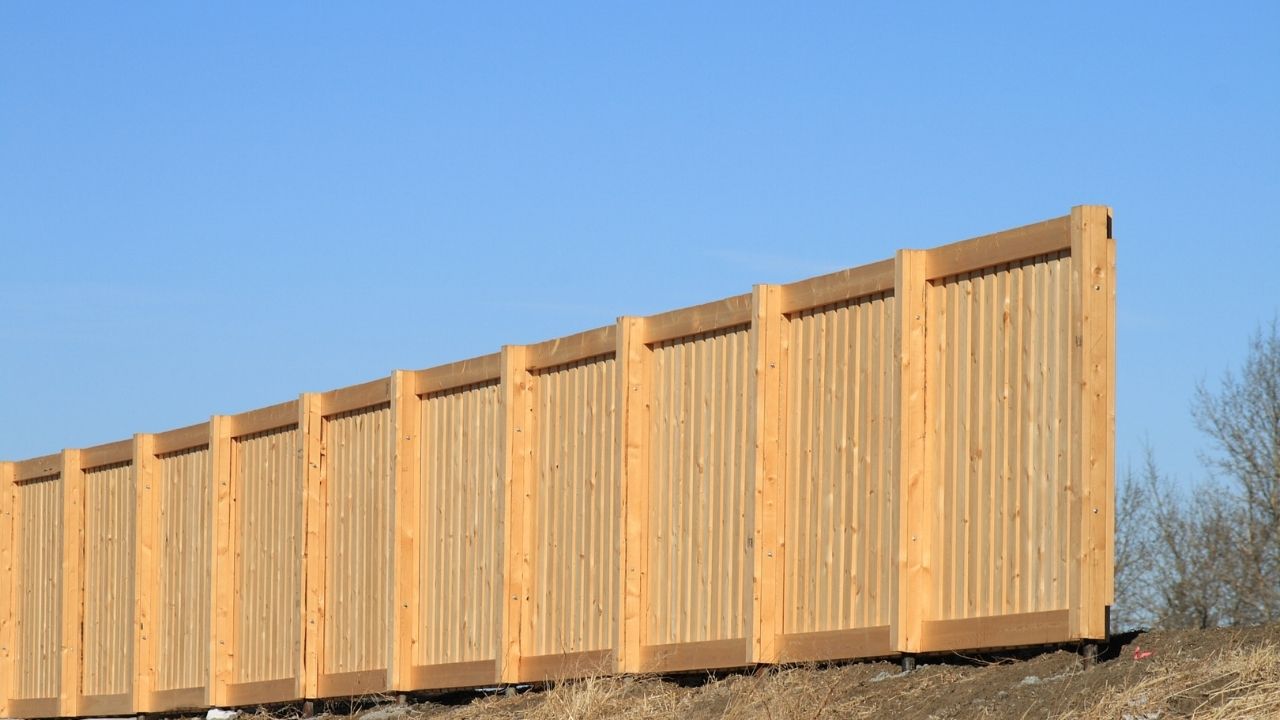
Prices for rail and post fencing vary greatly. For a cost of $3 to $5 per foot, some contractors will charge $35 to $60 an hour for labor. Most jobs take only one to two working days. But larger jobs can take five or more. A 200-300 foot rail and posts fence can be completed in one day by two to four people. Vinyl and Black locust are both options. Wood is the most popular material for these fences. Aluminum is more durable than flat rails and has a higher aesthetic appeal.
The cost of a rail and post fence can be considerably less than the cost of a privacy fence. Pine fences can last longer than composite wood, but they require more maintenance. You can spend a lot if these materials are painted. A fence with a stained or painted finish can run up to $3,500. A larger and taller fence will require more material. To find out which materials are allowed in your region, it is important that you check with your local building codes.

Split rail fences tend to be more costly than traditional wooden fences but are significantly less expensive than metal fences. You need to measure the outer boundaries of your property, as the rails are eight to 11 feet long. Remember to account for sloped or gates. For the perfect fence, a professional fence contractor will be able help you plan and measure. A professional can help with the planning.
You can choose any type of rail for your fence, and the cost depends on the material. Cedar is the most popular option, but requires more upkeep, including painting or staining every few years. Pine is an option that costs less. Though it's less expensive, it isn't the best choice. This type fence will require regular maintenance and will eventually have to be replaced. It may be necessary to hire a professional to do this job.
A post and rail fence is a common type of fence. The average cost ranges between $11 and $34 per linear foot. Do-it-yourself projects are cheaper than hiring professionals to complete the job. You can make a rail and post fence out of many different materials. However, it is best to match the landscape with the material you choose. A high-quality post and rail fence will look great in your yard.

The cost of a post and rail fence depends on its length and the number horizontal rails. Wood post and rail fences cost about $5 per linear foot. You can choose pine or cedar for the most cost-effective option if you are building a split rail or A frame fence. These two types of materials are not the only ones that can be used, but aluminum and steel are also low-maintenance options and extremely durable. A steel fence post and rail fence costs about $11 per foot.
FAQ
How do I select a competent contractor?
Ask family and friends for referrals when looking for a contractor. Check out online reviews. It is important to confirm that the contractor that you choose has worked in the same area as you. Request references and make sure to verify them.
How Much Does it Cost to Renovate a House?
The type of material, the project size and the complexity of renovations will all impact the cost. Wood, for example, requires additional tools such as saws and drills. Steel, however is not so dependent. The cost of renovations will vary depending on whether your contractor does all the work or you do it yourself.
The average home improvement project cost is between $1,000 and $10,000. If you plan to hire professionals, the total cost would range from $5,000 to $25,000. If you hire professionals, the cost would be between $5,000 and $25,000. However, if the task is done entirely by yourself, the cost could rise to as high as $100,000.
There are many factors that influence the final cost of renovations. You should consider the material used, such as brick vs concrete. brick vs concrete), the size of the project, the number of workers involved, the length of the project, etc. These factors must be taken into consideration when estimating the cost of renovation.
What are my considerations when purchasing a new house?
Before purchasing a new home, make sure that you have enough money saved up to cover closing costs. Refinancing your mortgage might be an option if you don’t have enough cash.
How should house renovations be ordered?
When renovating your home, the first thing to do is decide where everything should go. If you're planning on selling your home soon, it is important to consider how you wish to present your home for potential buyers. The next step is to plan the layout of your living, kitchen, and bathroom. Once you have decided which rooms you want to renovate, you should start looking for contractors who specialize in those areas. You can then begin your renovations once you have hired an expert contractor.
What should I fix first when renovating a house?
You must first clear out the clutter outside and inside your home. Next, you need to remove any moldy areas, replace damaged walls, repair leaky pipes, and repaint the entire interior. Final steps include cleaning up exterior surfaces and applying new paint.
Is there any way to save money when renovating my home?
Doing the majority of the work yourself can help you save money. For example, you could try to cut down on the number of people you use during the renovation process. You can also find ways to reduce costs for materials during the renovation.
Statistics
- ‘The potential added value of a loft conversion, which could create an extra bedroom and ensuite, could be as much as 20 per cent and 15 per cent for a garage conversion.' (realhomes.com)
- Design-builders may ask for a down payment of up to 25% or 33% of the job cost, says the NARI. (kiplinger.com)
- A final payment of, say, 5% to 10% will be due when the space is livable and usable (your contract probably will say "substantial completion"). (kiplinger.com)
- Rather, allot 10% to 15% for a contingency fund to pay for unexpected construction issues. (kiplinger.com)
- On jumbo loans of more than $636,150, you'll be able to borrow up to 80% of the home's completed value. (kiplinger.com)
External Links
How To
How do I plan a whole-house remodel?
Research and careful planning are essential when planning a house remodel. Before you start your project, here are some things to keep in mind. First, you must decide what type of home improvement you want. You can choose from a variety of categories, such as kitchen or bathroom, bedroom, living space, or living room. Once you have decided which category you wish to work in, you will need to determine how much money you have to spend on your project. If you are new to working in homes, budget at least $5,000 for each room. You might be able get away with less if you have previous experience.
Once you've determined the amount of money you can spend, you need to decide how large a job you want. A small kitchen remodel will not allow you to install new flooring, paint the walls, or replace countertops. If you have the money to do a complete kitchen remodel, you will be able to handle almost anything.
Next, look for a contractor with experience in the type or project you are looking to tackle. This way, you'll be guaranteed quality results and you'll save yourself a lot of headaches later on down the road. After finding a good contractor, you should start gathering materials and supplies. You might need to make everything from scratch depending upon the size of your project. There are many stores that offer pre-made products so it shouldn't be difficult to find what you need.
After you've gathered all the supplies you need, it's time to begin making plans. Begin by sketching out a rough plan of where furniture and appliances will be placed. The next step is to design the layout of the rooms. It is important to allow for electrical and plumbing outlets. Also, try to put the most used areas near the front door so that visitors can easily access them. Last, choose the colors and finishes that you want to finish your design. To save money and keep your budget low, you should stick to neutral tones.
Once you have completed your plan, it is time to begin building. Before you begin any construction, make sure to verify your local codes. Some cities require permits. Others allow homeowners to build without permits. When you're ready to begin construction, you'll first want to remove all existing floors and walls. Next, you'll lay down plywood sheets to protect your new flooring surfaces. Next, you will nail or screw together pieces wood to create the frame for your cabinets. Finally, attach doors and windows.
There are some final touches that you will need to make after you are done. You might want to cover exposed pipes or wires. To do this, you'll use plastic sheeting and tape. You will also need to hang photos and mirrors. Make sure to keep your work area neat and tidy.
If you follow these steps, you'll end up with a beautiful, functional home that looks great and saves you lots of money. Now that you have a basic understanding of how to plan a house remodel, it's time to get started.